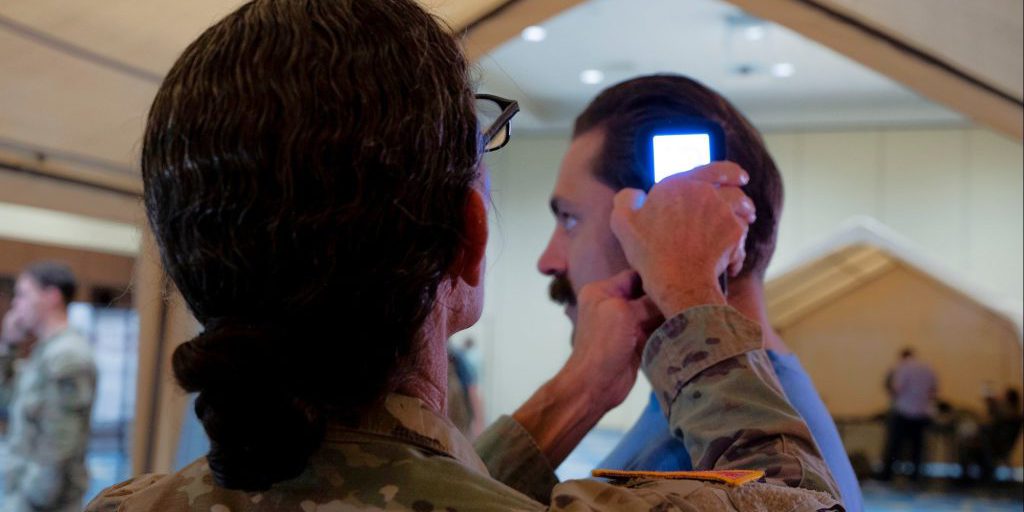FORT LIBERTY, N.C. — Team members with the U.S. Army Medical Materiel Development Activity joined dozens of U.S. Army medics at Fort Liberty, North Carolina, to assess the progress of several traumatic brain injury (TBI) detection devices as part of a soldier touchpoint this week.
The soldiers provided feedback on two brain trauma assessment devices currently under development at USAMMDA under the management of the Warfighter Readiness, Performance, and Brain Health (WRPBH) Project Management Office and stakeholders with the North Carolina Center for Optimizing Military Performance. The event, which included combat casualty assessment lanes inside Fort Liberty’s Iron Mike Conference Center, was designed to assess the progress of TBI Field Assessment Device program and inform future program development.
Feedback from prospective end users — U.S. Army medics, medical officers, and combat troops — is a vital step in development programs, according to U.S. Army Lt. Col. Dana Bal, a product manager with WRPBH.


